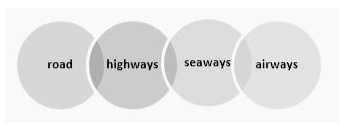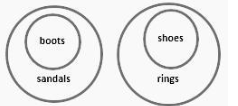Inference or deduction are the meanings conveyed by the “Greek” word syllogism. As a result of the fact that such inferences are founded on logic, there are inferences that are referred to as logical deductions. The propositions or premises serve as the foundation for these deductions. This chapter covers a variety of question kinds, including those with two, three, or even four statements, as well as those with several conclusions.
As a result of the fact that many types of questions based on logical reasoning and syllogisms are being posed in various government examinations, these subsections of the verbal reasoning part have become the most important of their kind.
Syllogism
A fundamental component of logical reasoning, in particular analytical reasoning, is the syllogism. Candidates are required to draw inferences from the assertions that are provided to them in this section, which comprises certain statements. Despite the fact that the premises and conclusions may appear to be inconsistent with one another, applicants are required to approach issues concerning syllogism by assuming that the assertions presented are accurate in every respect.
A candidate’s basic aptitude and ability to draw inferences from provided statements utilising methodical approaches to problem solving are evaluated through the use of syllogism as part of the selection process.
Types of syllogism
Due to the fact that we are now aware of the structure of the questions that are associated with the syllogism reasoning segment. Let’s have a look at the many different kinds of queries that could appear one after the other down below.
Basic Syllogism
In order for this kind of syllogistic reasoning to be valid, the conclusions have to be absolutely correct. We shall accept as false conclusions that have a probability of 99 percent or above.
Either-or Case
In this style of syllogism reasoning, the either-or case will be generated when the conclusions are not true one hundred percent of the time but the two supplied conclusions are true fifty percent of the time each.
Coded Syllogism
The statements and the conclusions in this type of syllogistic reasoning are presented in a coded format. Applicants have to decipher the statements and the inferences in order to locate the correct solution.
Sequential Syllogism
In this form of syllogistic thinking, the statements are presented first, then the possible solutions follow. Candidates are required to select the group that contains the set in which the third assertion can be derived logically from the first two statements.
Tips and Tricks to Solve Syllogism
In the passage that follows, candidates will find a variety of hints and strategies that can be used to answer problems that are part of the syllogism reasoning portion.
- If a particular conclusion is shown to be incorrect in any one of the conceivable diagrams, then that conclusion is regarded as being incorrect overall.
- If all of the claims are true, then any negative conclusions that could possibly be drawn from those statements are untrue, and vice versa.
- Both the subject and the predicate are interchangeable when referring to the complimentary pair “Some + No.”
- In the event when two different conclusions share the same subject and predicate, as well as make up a pair that is complimentary, but only one of the conclusions is true, then the situation will not constitute an either-or case. When considering the Either or scenario, “Some + Some” should not be considered a complementary pair.
- If a probable conclusion holds true in any one of the various diagrams that could be drawn, then the possibility is taken to have some degree of truth to it.
- The phrase “just a few” indicates that both of the conclusions are unquestionably correct.
- As a result, the conclusion that some A are B while other A are not B will most certainly be correct.
- Both “All + Some not” and “Some + N” are examples of complementary pairs for the Either or case.
- Each of the two conclusions should be made up of one of the complimentary pairs described above. Both the subject and the predicate of the two conclusions must be the same, and they are incompatible with one another. Cannot be stated ought should be the response given for both of the conclusions.
- When attempting to solve the problems based on syllogism, candidates need to keep the following things in mind at all times.
Solved Examples
Directions: The next question contains three different assertions, which are then followed by three different conclusions labelled I, II, and III. You have no choice but to accept the validity of the claims that have been presented to you, even if they appear to go against what is generally accepted as fact.
Statements:
No panda is a dog.
Some pandas are crow.
All dogs are animals.
Conclusion:
Some dogs are crow.
Some crow are pandas.
Some animals are not pandas.
Solution:
- Some dog are crow → False (No direct relation given hence, false)
- Some crow are panda → True (Some panda are crow hence, some crow are panda is true)
- Some animals are not pandas → True (All dogs are animals and No dog is a panda. So those animals which are dog can never be panda hence, true)
Thus, only conclusion II and III follow.
Conclusion
To be more specific, writers may decide to employ syllogism because: Using a syllogism can help make a logical argument appear undeniable, regardless of whether it is being used to demonstrate a basic point or a complex one. Syllogisms can be used to show both simple and complex points.
 Profile
Profile Settings
Settings Refer your friends
Refer your friends Sign out
Sign out









